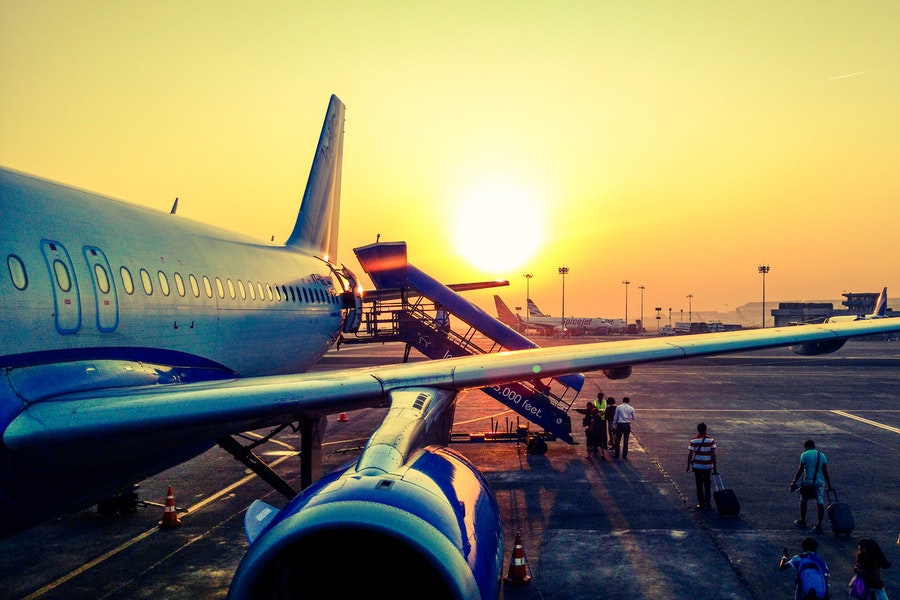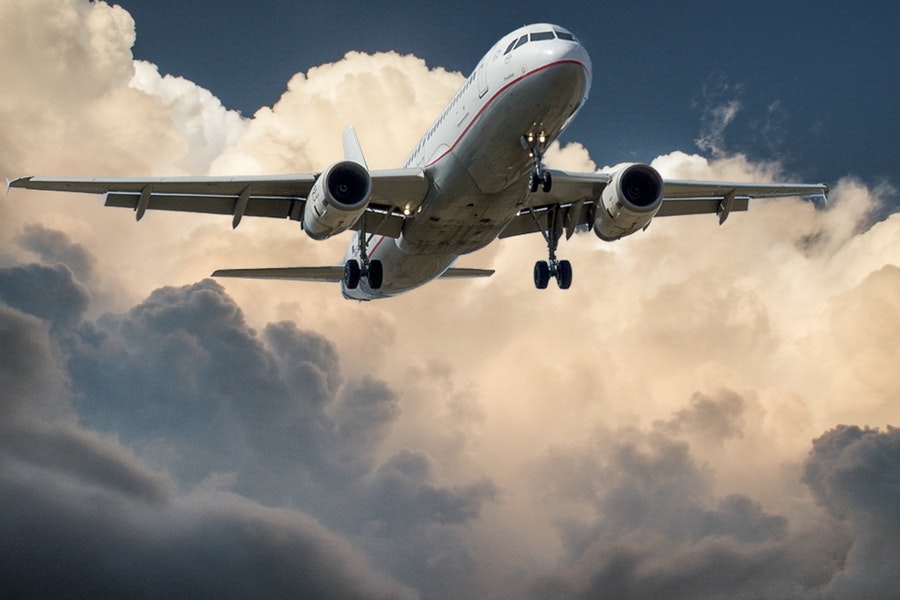The aviation industry is notorious for its deplorable customer service. During the 2010s, companies were busy segmenting their best customers with innovative loyalty programs, while others offered smaller jet seats and smaller legroom.
Both of these approaches have been at the heart of the aviation marketing that airlines developed at the time.
Despite objections from observers and their customers, most airlines merged into huge, customer-hostile companies. They outsourced most of their core service functions and, in some cases, waived their written and implied commitments.
On the American Customer Satisfaction Index (ACSI) in 2013 airlines collectively scored 69 out of 100 possible from their passengers, illustrating how most passenger experiences turn out to be.
They have such a bad reputation in the customer service industry that when a customer does have an outstanding experience onboard any airline, it’s a massive surprise that customers can’t even believe it.
Add to that the fact that given the state and access to technology today, it is becoming more and more difficult for airlines to differentiate themselves. In this blog article, we’ll look at how aviation marketing can help an airline make the best use out of its vast potential.

Creating a unique customer experience
It is difficult for any airline to differentiate the customer experience in such a crowded industry. The planes themselves are almost identical. The food, if any, is always terrible. Airport security is carried out by an organization that the airlines have little control over. And almost everyone who flies has an unpleasant story of their own.
Given the dire state of customer service in the aviation industry, those who deliver good customer service and have efficient aviation marketing stand out like beacons in a sea of darkness. Thus, it is instructive to note what these airlines are doing to stay on top of their game and apply this to other industries.
Simply put, what makes or destroys an airline brand is not a grand promise advertised on a big screen but a personal interaction between an immediate employee and a customer.
Be helpful and responsive on social media
Airlines are slowly but surely realizing the power of social media in delivering impeccable customer service. However, there are a few hits and misses in the ranks.
Here’s the good thing: some social media managers understand that everything that happens on social media needs to be translated into some kind of real action somewhere and aid to a brand’s overall aviation marketing.
The bad part, of course, is that other social media managers don’t quite figure it out yet and are throwing the ball. American Airlines’ automatic Twitter responses made them funny and then inaccurate.
After all, social media is all about personal connections and authentic conversations. The inauthentic and automated voice on social media doesn’t help or connect with the customer
Respond quickly to your customers’ social media inquiries and help solve their problems, and you will be right at the point of customer support.

Make extensive use of technology
In recent years, new technologies have emerged all over the place, and companies have begun to look at them and implement them to improve the customer experience with exceptional results.
One airline recently started using technology to track digital social media conversations. They began to better understand what people think of their experience with the airline and respond accordingly.
For example, a customer recently tweeted a photo of cereal on offer at the airline’s top-notch lounge and noticed his favorite was missing. The next time he came to the living room, the cereal was there.
Some airlines have even digitized the entire pre-flight process, from electronic boarding passes to text messages with reminders.
The possibilities that technology brings for different industries are just endless. By trying out the right technology, you can make your customer service impeccable and much more enjoyable than it ever could be, only strengthening your aviation marketing.
Ultimately, it’s important to note that all of these points return to the core idea that excellent customer service comes down to how a business interacts with a customer on a personal level. The best customer service staff in the aviation industry strive to go down to the customer level and serve them appropriately – this is the secret sauce for customer satisfaction.
Create a comprehensive marketing strategy
This means that any step you take towards a more comprehensive marketing strategy will be a win-win. A marketing strategy isn’t just an expensive ad in a luxury aviation magazine.
You need a multi-channel approach that reaches your audience where they are, with the right content and an intuitive shopper.
Easier said than done, but not impossible. Instead, consider these steps to create a strategy to elevate your aviation marketing above the competition.
Define your audience
You probably have a pretty good idea of the audience your aviation marketing should target. Private aviation clients have well above average net worth and liquidity – after all, data shows that 73% of private jets in the US are bought with cash.
In many ways, airplanes are luxury goods. This means that knowing that your client should be the most crucial step in your strategy.
One step is to develop an image of the buyer, and to hypothetically know the ideal members of your target audience. Then, you have a profile to guide all of the next steps in the process.

Know your surroundings
The second step in this process goes beyond your aviation brand. Simply put, you have to make sure you know exactly who your competitors are, both directly and indirectly.
Again, you probably have a pretty good idea of your direct competitors. This usually includes other members of the aviation industry, aircraft manufacturers, and so on. These are important to consider but are generally easy to find.
The second, more complex group is indirect competitors. Think of these companies as alternatives that are competing for your audience’s money and attention at the same time with you.
It could be from the same category – perhaps an exotic car or a new dream home. But it can also go beyond that. The tuition fee for a client’s daughter at a private college is no less than that of your aviation company.
Set your marketing goals
What should your reactive marketing do? In any luxury industry, this answer usually relates to brand awareness.
Brand awareness is especially relevant for relatively new growth-oriented corporations.
Brand authority is critical in luxury industries like aviation, where reputation matters and must be implicit for your customers even to consider you.
Customer conversion and new customers are the ultimate business goal of most companies.
Brand loyalty, building a sense of trust with existing customers to build profitable long-term relationships.
Where you fall into this category depends on your business. Regardless of the answer, however, you need to ensure that your goals will always be measurable.
Assign specific dates and timelines for each goal. This way, you can periodically review your campaigns to track your progress towards the goal and make adjustments if necessary.
Find your ideal channels
It’s time to focus on implementing your jet marketing strategy. Given the high cost of customer acquisition, simply running multiple advertisements on the platform of your choice is never enough.
It would help if you spoke to your audience consistently but always with a value that keeps potential customers from missing your brand.
This multi-channel strategy should certainly not be planned indiscriminately. You cannot be everything to everyone, especially when it comes to luxury goods like planes.
Instead, choose the tactics that you want to focus on strategically.
SEO-optimized website grabs your audience’s attention as they search for private jet-related content.
Your website’s interactive landing pages are designed to drive conversions and more targeted messaging in the future.
Organic social media marketing builds your brand reputation, shares valuable content, and showcases your industry expertise.
A content marketing strategy based on visuals conveys both the value and emotion that needs to be seen in a large luxury purchase. Paid ads are designed to hyper-target your specific target audience.
Use email marketing to stay visible to your audience over time and accommodate the long journey of buying an airplane.

Online presence that exceeds expectations
Social media has become a vital part of aviation marketing. Airlines spend as much time on social media as others but log on with very different expectations. Your goal is to meet and exceed these expectations.
Of course, you can’t just build a web presence and hope for the best. Instead, you need a comprehensive strategy that will help your brand reach the right audience with the right content at the right time.
Share relevant content about what it’s like to own an airplane, get to know your different models, and more. Strange behind-the-scenes footage never hurts.
Conclusion
Yes, aviation marketing can be difficult, and this becomes even more challenging for high-value items like jets.
First, the luxury jet market is multiplying and is not expected to slow down anytime soon. A recent survey also found that the aviation industry lags far behind other industries in using digital marketing, such as social media and SEO. Combine the two, and your brand can easily benefit from the opportunity.
All you need is a comprehensive strategy. With a digital marketing agency, you will be able to implement this plan and start working with every new client interested in your aviation brand’s services.
